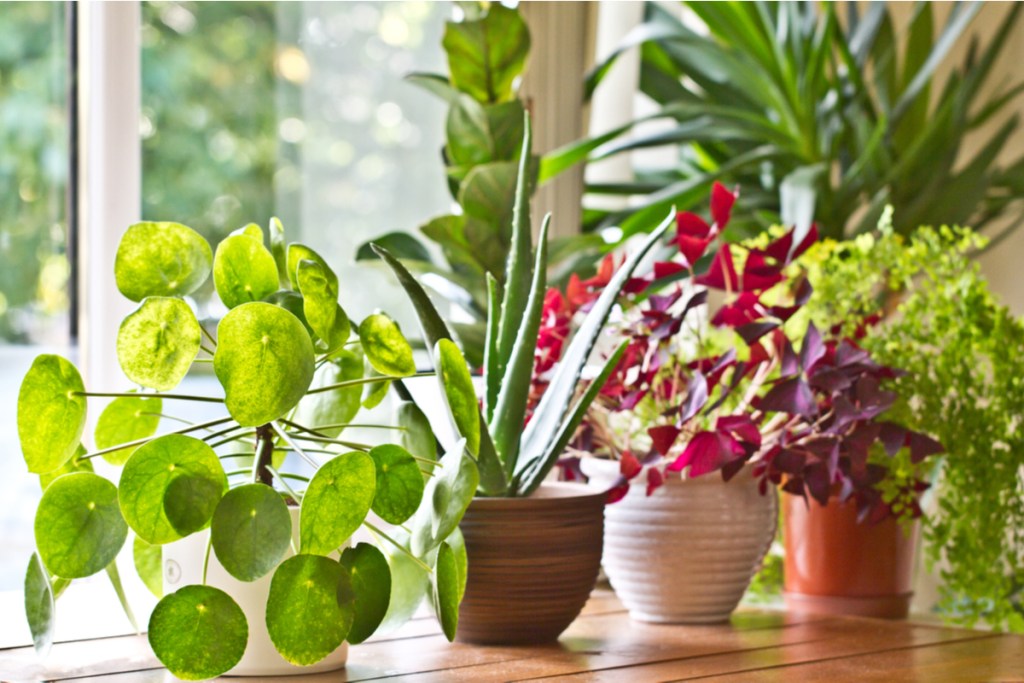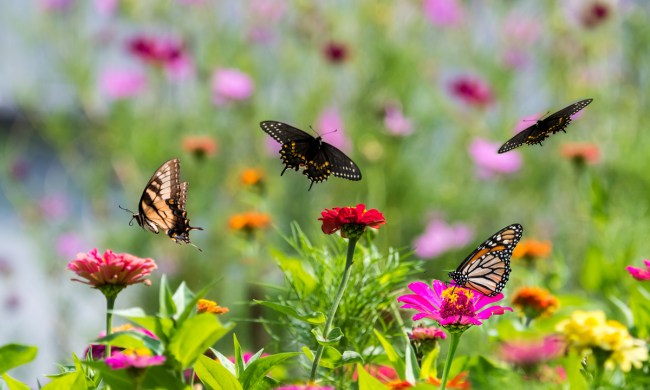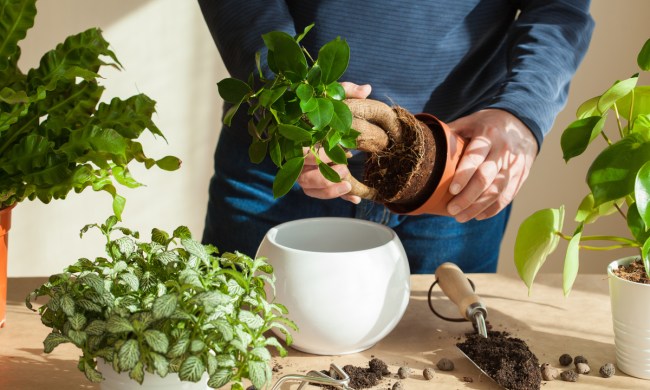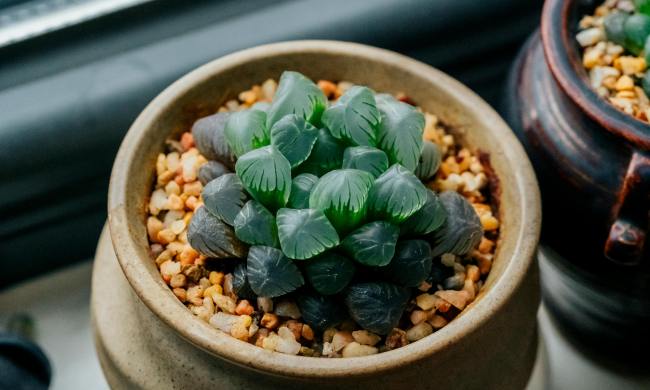Growing plants indoors is a great way to connect with nature indoors. Whether you live in an urban setting with no outdoor space, a cold environment with a short short growing season, or simply love plants, indoor plants bring joy. Houseplants help to clean the air, improve focus, decrease stress, and boost productivity. They soften the atmosphere in a room to make it generally more pleasant. There are plenty of great reasons to grow houseplants, and the best time to start is now. If you’re ready to begin, follow these tips to create a perfect home gardenscape.

Choose plants to fit the space
Each type of plant has adapted to grow in specific lighting, from full sunlight to deep shade. They also display particular growth habits, or shapes, such as trees, climbing vines, trailing plants, upright clumps, and shrub forms. These different variables apply to houseplants. For the best results, select plants that require the lighting your space has to offer and that will fit comfortably into the space.
Observe the lighting in the areas where you wish to grow houseplants and the amount of available space. A sunny room with south- or west-facing windows that receives six hours of sunlight daily is considered a bright room. Rooms with no natural sunlight, or only north-facing windows, have low light.
Floor plants are an excellent way to fill empty space.They typically range from 2.5 to 5 feet tall and include tree forms, also called standards, as well as bush forms. Smaller tabletop plants may be bushy or trailing. Display them on plant stands, shelves, end tables, and other open spaces.
Display plants in groups
Large floor plants work well alone, but smaller plants easily become lost in space. Rather than dotting individual small plants throughout the room, create a more impactful garden feel by clustering them in groups of three or five. Try mixing and matching a variety of growth habits, leaf textures, and foliage colors for even more visual interest. In addition to the aesthetic benefit of plant groupings, they also make plant maintenance more efficient since it’s done all in one place.
Pot them correctly
Aesthetics aside, plant pots are first and foremost a replacement for the earth. They must provide adequate resources (water and nutrients) for the plant to survive. New houseplants can either stay in the plastic grower pot they came in or be re-potted into a nicer pot of the same size. Eventually, as the plant grows, it must be re-potted into a larger container. The next size up should be two to four inches larger than the one it’s coming out of, depending on the plant’s growth rate. Planting containers come in endless shapes and sizes, so choose what you like best. Never plant into a container that does not have a drain hole.
Most houseplants, including pothos, philodendron, aglaonema, ficus, palms, ivy, and many others prefer to grow in a moist, well drained growing medium (aka, potting soil, potting mix, or container mix). When time comes to re-pot, choose a sterilized general purpose potting soil to reduce the likelihood of fungus gnat infestation. Some plants, like cacti and orchids, prefer specialty growing media designed for their unique needs. Do not cut corners. Use the appropriate soil for these specialty plants.

Water wisely
If a plant is growing indoors, in a quality growing medium, and in a properly sized container, it should only need water once a week (or less often).There are several methods to help determine whether or not a plant needs water. Pick up the plant and notice the weight of the pot. If it is noticeably lightweight, it may need water. Push your finger into the soil up to the first knuckle. If it is dry at that depth, it probably needs water. Or, probe the soil with a moisture meter. The display will tell you if the plant needs water.
The easiest place to water houseplants thoroughly without making a mess is in a kitchen sink. Place the plant in the sink and use the dish spray nozzle with low pressure to deeply water the whole root mass. Then leave the plant in the sink until all excess water drains off. Gardeners who wish to water without chlorine or water purifying chemicals use day-old tap water or collect rainwater for their houseplants.
Isolate plants to control pests
Occasionally pests find their way into houseplants. Fungus gnats live in damp soil and swarm by the dozen when the plant is disturbed. Their young may damage plant roots if the population swells. Aphids, mealybugs, and spider mites attack tender leafy growth and fresh, succulent stems. They insert their mouthparts into the plant tissue to feed on the sap. These and other bugs are relatively harmless in small numbers. But you’ll need to take action to avoid a full-blown infestation.
Isolate the affected plant into an area away from the others, ideally another room. Doing so will minimize the likelihood of the problem spreading. Use yellow fly tape on short stakes to trap fungus gnat adults. For aphids, mealybugs, and spider mites, wipe down the plant with a rubbing alcohol-soaked microfiber cloth. Keep the plant on quarantine for a few weeks as you watch for a resurgence of the population.
Houseplants make a cozy addition to any home. They clean the air, soften the edges, and bring a comforting touch of nature indoors. By choosing appropriate plants for your growing environment and caring for them according to their needs, you can create a beautiful home gardenscape that you’ll love.



